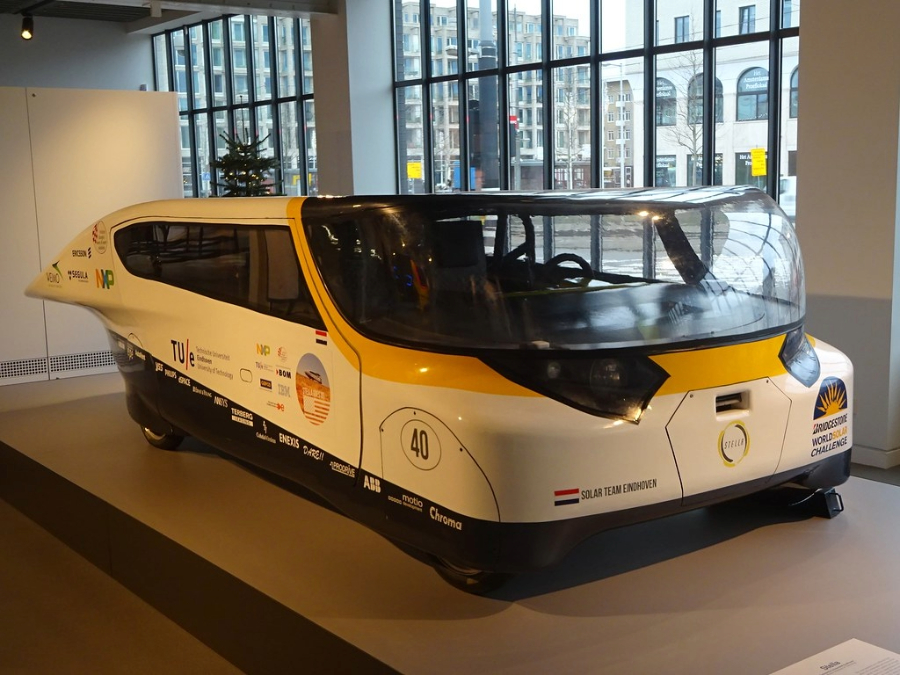Ushering in a new vayve of E-mobility with solar cars: A sun-powered revolution
Harnessing the Power of the Sun
At the core of solar cars lies a simple yet revolutionary concept: harnessing the power of the sun for sustainable mobility. Solar panels, typically mounted on the car’s surface, capture sunlight and convert it into electricity through photovoltaic cells. This clean and renewable energy source eliminates the need for traditional fossil fuels, reducing carbon emissions and lessening the environmental impact of transportation.
Zero Emissions, Infinite Potential
One of the most compelling advantages of solar cars is their ability to operate with zero emissions. Unlike conventional vehicles that rely on combustion engines, solar cars run on electricity generated from sunlight. This translates to a significant reduction in air pollution, making them an attractive option for environmentally conscious consumers and a crucial player in the fight against climate change.
The promise of zero emissions extends beyond the immediate environmental benefits. Solar cars contribute to the broader shift towards sustainable practices, aligning with global efforts to reduce our carbon footprint and transition to cleaner energy sources.
Energy Independence and Cost Savings
Solar cars offer a unique proposition in terms of energy independence. By tapping into the sun’s limitless energy, these vehicles reduce reliance on traditional charging infrastructure. While conventional electric cars need access to charging stations or home charging units, solar cars can harness energy wherever there is sunlight. This not only provides greater flexibility for drivers but also contributes to long-term cost savings as the primary fuel source – sunlight – is essentially free after the initial investment in solar technology.
Technological Advancements Driving Innovation
The development of solar cars has spurred significant technological advancements in multiple domains. Continuous research and innovation have led to improvements in solar panel efficiency, energy storage systems, and the use of lightweight materials. These innovations have addressed some of the initial challenges associated with solar cars, such as limited range and efficiency.
Improved efficiency in solar panels means that more energy can be captured from the same surface area, enhancing the overall performance of solar cars. Advances in energy storage systems ensure that solar energy captured during the day can be stored for use during periods of low sunlight or at night. Lightweight materials contribute to the overall efficiency of the vehicle, ensuring that energy is used more effectively.
Overcoming Challenges
While the potential of solar cars is immense, there are challenges that the industry must overcome for widespread adoption. One significant challenge is the efficiency of solar panels, as current technology still struggles to capture and convert sunlight with optimal efficiency. Weather conditions, such as overcast skies or rain, can also impact the performance of solar cars, necessitating the development of supplementary charging options.
Researchers, engineers, and environmentalists are actively working to address these challenges. Investments in research and development are crucial to improving the efficiency of solar panels and finding innovative solutions to enhance the overall viability of solar cars. Collaborative efforts from various stakeholders are essential to overcome these hurdles and accelerate the integration of solar cars into mainstream transportation.
Solar Cars in Practice
Several pioneering companies and organizations have already introduced solar cars to the market, showcasing their commitment to sustainable mobility. These vehicles come in various shapes and sizes, catering to different needs and preferences. Some models are designed for urban commuting, offering a practical and environmentally friendly alternative for short-distance travel. Other, more powerful solar cars are suitable for longer journeys, emphasizing the versatility and potential of solar technology in various contexts.
Governments and private entities around the world are recognizing the potential of solar car technology and are investing in its development. Incentives, subsidies, and research grants are being provided to encourage the adoption of solar cars and accelerate their integration into mainstream transportation. These initiatives signal a collective acknowledgment of the environmental benefits and long-term sustainability offered by solar-powered mobility.
Shaping the Future of Transportation
As solar cars become more prevalent on roads, they have the potential to reshape the entire transportation landscape. The integration of solar technology into vehicles is not merely a technological novelty but a practical solution to the environmental challenges posed by traditional automobiles. The shift towards solar-powered mobility represents a significant step forward in creating a more sustainable and eco-friendly transportation system.
The potential impact of solar cars extends beyond individual vehicles. As more solar cars hit the roads, the demand for solar infrastructure is likely to increase. This, in turn, can drive further advancements in solar energy technology and infrastructure, fostering a self-sustaining cycle of innovation and adoption.
Conclusion
In conclusion, the concept of ushering in a new vayve of e-mobility with solar cars holds great promise for a cleaner, greener, and more sustainable future. While challenges exist, the progress made in solar car technology is undeniable, and the momentum toward widespread adoption is building. As consumers, businesses, and governments increasingly prioritize environmentally friendly options, solar cars emerge as a beacon of hope in the journey toward a carbon-neutral transportation system.
The road ahead may be challenging, but with continued innovation and commitment, solar cars have the potential to drive us towards a brighter and more sustainable tomorrow. As we embrace the sun’s energy to power our vehicles, we not only reduce our carbon footprint but also contribute to a paradigm shift in the way we think about and approach mobility. The future of transportation is being shaped by the rays of the sun, paving the way for a new era of e-mobility that is both efficient and environmentally responsible.
Source

